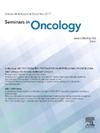从癌症治疗的临床试验结果中获得的帮助或伤害的可能性:它真的有帮助吗?
IF 2.5
3区 医学
Q2 ONCOLOGY
引用次数: 0
摘要
导致治疗批准的大多数癌症临床试验关注的是客观肿瘤反应、无进展生存期(PFS)和总生存期(OS)等结果。然而,评估毒性同样重要,特别是在比较标准疗法和实验疗法时。临床试验往往不能综合疗效与不良事件发生频率之间的关系,部分原因是测量单位的差异。为了解决这个问题,治疗所需的数量(NNT)和伤害所需的数量(NNH)可以作为标准化措施。NNT表示需要从治疗中受益的患者数量,而NNH表示需要经历伤害的患者数量。这些指标允许对治疗效果和毒性进行更平衡的评估。通过计算PFS或OS的NNT和不良事件的NNH,我们可以评估相对于潜在危害的治疗益处。被帮助或被伤害的可能性(LHH)将这些指标组合成一个比率,表达了益处和毒性之间的平衡。理想情况下,LHH值大于1表明对疗效的有利平衡。虽然LHH主要应用于精神药物,但有时也用于肿瘤。例如,对晚期非小细胞肺癌和乳腺癌的研究已经证明了LHH在比较治疗方面的效用。尽管LHH的计算有一定的局限性,但它为解释治疗的风险和对患者的益处提供了有价值的工具。它还可以指导癌症治疗的临床试验设计。本文章由计算机程序翻译,如有差异,请以英文原文为准。
The likelihood of being helped or harmed obtained from clinical trial results for cancer therapy: Can it really help?
The majority of cancer clinical trials leading to therapeutic approval focus on outcomes such as objective tumor responses, progression-free survival (PFS), and overall survival (OS). However, it is equally important to assess toxicity, especially when comparing standard therapies with experimental ones. Clinical trials often fail to synthesize the relationship between efficacy and adverse event frequency, partly due to differences in measurement units. To address this, the number needed to treat (NNT) and number needed to harm (NNH) can be used as standardized measures. NNT represents the number of patients required to benefit from a treatment, while NNH indicates the number needed to experience harm. These metrics allow for a more balanced evaluation of therapeutic efficacy and toxicity. By calculating NNT for PFS or OS and NNH for adverse events, we can assess the therapeutic benefit relative to potential harm. The likelihood of being helped or harmed (LHH) combines these metrics into a ratio that expresses the balance between benefit and toxicity. Ideally, LHH values greater than 1 indicate a favorable balance toward efficacy. Though LHH has been applied mainly to psychotropic drugs, it was used in oncology sometimes. For example, studies in advanced non–small cell lung cancer and breast cancer have demonstrated LHH's utility in comparing treatments. Whereas LHH calculation has some limitations, it offers a valuable tool for explaining treatment risks and benefits to patients. It also could guide clinical trial design in cancer therapy.
求助全文
通过发布文献求助,成功后即可免费获取论文全文。
去求助
来源期刊

Seminars in oncology
医学-肿瘤学
CiteScore
6.60
自引率
0.00%
发文量
58
审稿时长
104 days
期刊介绍:
Seminars in Oncology brings you current, authoritative, and practical reviews of developments in the etiology, diagnosis and management of cancer. Each issue examines topics of clinical importance, with an emphasis on providing both the basic knowledge needed to better understand a topic as well as evidence-based opinions from leaders in the field. Seminars in Oncology also seeks to be a venue for sharing a diversity of opinions including those that might be considered "outside the box". We welcome a healthy and respectful exchange of opinions and urge you to approach us with your insights as well as suggestions of topics that you deem worthy of coverage. By helping the reader understand the basic biology and the therapy of cancer as they learn the nuances from experts, all in a journal that encourages the exchange of ideas we aim to help move the treatment of cancer forward.
 求助内容:
求助内容: 应助结果提醒方式:
应助结果提醒方式:


